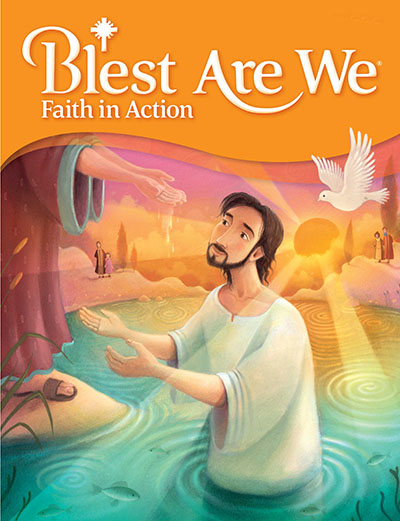If you have been looking for a fresh and structured way to share the key events of Jesus’ life and ministry, consider how the Rosary can be your helper in lesson planning. In the Rosary, we recall the significant events in the story of Jesus and Mary, his mother. We are remembering the life of Jesus through Mary’s eyes. Tradition has it that Mary appeared to Saint Dominic around the year 1221 and gave him the Rosary, directing him to teach people this devotion. So, the Rosary has always been a teaching tool.
 On August 15, we celebrate the Assumption of Mary, the fourth Glorious Mystery of the Rosary. This feast commemorates our belief that when Mary died, her body was "assumed" into heaven to be reunited with her soul instead of going through the natural process of physical decay. In 1950, Pope Pius XII declared the Assumption of Mary the official dogma of the Church.
On August 15, we celebrate the Assumption of Mary, the fourth Glorious Mystery of the Rosary. This feast commemorates our belief that when Mary died, her body was "assumed" into heaven to be reunited with her soul instead of going through the natural process of physical decay. In 1950, Pope Pius XII declared the Assumption of Mary the official dogma of the Church.
The dogma of the Assumption assures us that Mary reigns in heaven with her son. Mary was in the Upper Room when the Resurrected Lord appeared, and then again at Pentecost. We can imagine her standing among the apostles as they witnessed Jesus ascend into heaven. Mary’s story reminds us of our hope of eternal life with Christ.
In the Joyful Mysteries of the Rosary -- Annunciation, Visitation, Nativity, Finding Young Jesus in the Temple -- we see that Mary is a key actor in the drama of salvation. In the Sorrowful Mysteries, we recall Mary accompanying Jesus in his Passion and at the foot of the Cross. In the Luminous Mysteries, Mary is there at the Wedding Feast of Cana and throughout Jesus’ ministry.
Our Bishops remind us, “The repetition in the Rosary is meant to lead one into restful and contemplative prayer related to each Mystery. The gentle repetition of the words helps us to enter into the silence of our hearts, where Christ's spirit dwells. The Rosary can be said privately or with a group.” Instructions for the Rosary are at https://www.usccb.org/how-to-pray-the-rosary, as well as in Our Family Prays.
Strengthen Prayer Habits: Teaching about the Rosary also offers an opportunity to review and commit to memory traditional Catholic prayers; The Apostles Creed, Our Father, Hail Mary, and Glory Be to the Father.
Reflection Activity: Invite students to retell one of the events of Jesus’ life from the perspective of an eyewitness. They should begin, “I was there when Jesus…” and then retell the story from their point of view. They might also mention seeing Mary on the scene and describe their impressions of her as events unfolded.
Rosary as Review: During the school year, expand students’ learning about the events of Jesus’ and Mary’s lives in the story of salvation. In Blest Are We Faith in Action, check the Director’s Resource.
 About the Author
About the AuthorDr. Lauri Przybysz specializes in equipping families to live their vocation to be domestic churches and signs of God’s love. Lauri received the Doctor of Ministry from the Catholic University of America, and she has been both a Catholic middle school religion teacher and a faith formation coordinator at the archdiocesan and parish levels. She is the mother of six children and grandmother of 21.
Product Highlight
 Blest Are We Faith in Action - School Edition Grades K-8
Blest Are We Faith in Action - School Edition Grades K-8
Blest Are We Faith in Action invites all learners to explore and grow in Faith, Word, and Action. Using an integrated approach, each unit is based on a particular theme or area of Catholic belief and practice. This theme is studied over four individual chapters that correspond to the four pillars of the Catechism: What Catholics Believe, How Catholics Worship, How Catholics Live, and How Catholics Pray. In this way, the essentials of Catholic teaching are presented in an integrated and balanced approach that helps students learn and deepen their faith and Catholic identity.
